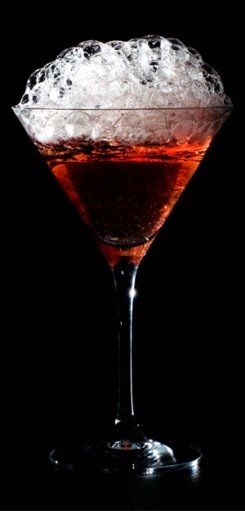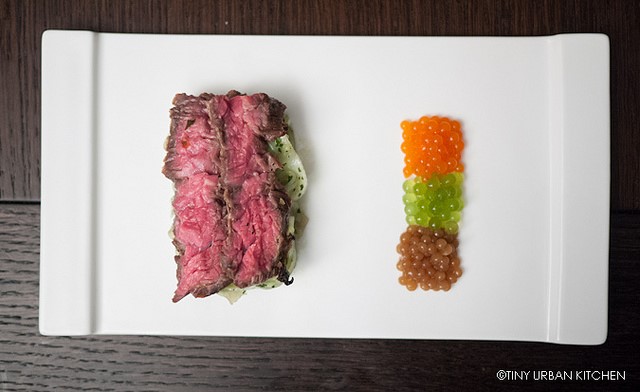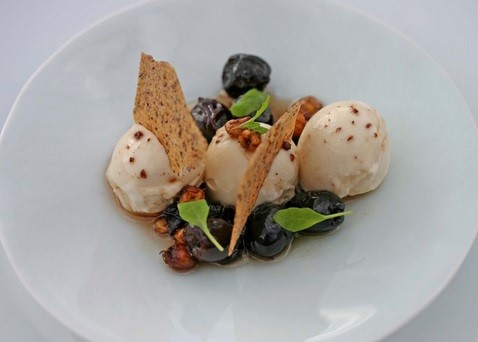|
By Amy Chan
What do you get when you cross a lab scientist with a restaurant chef? A molecular gastronomist! Whilst this may sound like a joke hidden inside a Christmas cracker, the business of molecular gastronomy is far from a light-hearted affair. With Heston Blumenthal’s Fat Duck restaurant – one of the first restaurants to apply molecular gastronomy – having its own in-house laboratory to make chocolate wine complete with a vacuum oven, you know things are getting pretty serious. Some call it avant-garde cuisine. thers call it modernist, progressive or even experimental. Whichever way you look at it, molecular gastronomy (loosely defined as the physical and chemical transformations that happen during cooking and food preparation) borders on the weird and wonderful for this unconventional style of cooking. Coined in 1989 by the fathers of molecular gastronomy, Hungarian physicist Nicholas Kurti and French physical chemist Hervé This, the term has since increased in popularity in the last two decades, evolving to newer terms such as molecular cooking. With dishes such as nitro-scrambled egg-and-bacon ice cream – one of the most famous molecular gastronomy dishes known – it is no wonder that this field of science has piqued the interest of chefs and diners from all over the world. Next time you visit a restaurant, notice the details, like the sauces and accompaniments, around the main dish. The bubbles, foams, powders, edible papers and spherical sauces that you might pick out are all just the tip of the iceberg in the world of molecular gastronomy. Yet, fancy as it sounds, you too can try out some of these molecular gastronomy techniques right in your own home! Try these recipes out yourself and wow your guests, with your culinary skills, this Thanksgiving! Cranberry Bubbles Cosmo
With turkey being the traditional main meal at Thanksgiving – what better drink to accompany this than with a cranberry cosmopolitan cocktail? These cranberry bubbles are made using an air pump and can top a traditional cosmo for that funky molecular gastronomy touch.
Ingredients
Preparation
Assemble and Serve
Spherical Sauce “Caviar”
For your main meat, instead of having gravy or a sauce served over the traditional turkey, while not try serving with sauce encapsulated into spheres? This technique called “spherification” is one of the basics of molecular gastronomy. It takes any liquid and forms a sphere with it, with a gel membrane on the outside that ‘pops’ when you bite into it, just like caviar. To do this, you will need special chemicals – but once you have made spheres once, you’ll want to keep making more!
Ingredients
Preparation
Assemble and Serve
Hot Maple Ice Cream
What better way to finish off a Thanksgiving dinner than with a hot maple ice cream! With the days getting shorter and temperatures slowly dropping, summer seems like a long way off. But, you can bring back some of those summer memories with this hot ice cream recipe, with a touch of Autumn maple syrup flavor! This ice cream doesn’t melt in warm temperatures –in fact, it uses heat to form it.
Ingredients
Preparation
Assemble and Serve
If you try these recipes out this Thanksgiving, share your photos on our Facebook page! About the Author
Amy Chan is currently finishing her doctoral degree at The University of Auckland with the School of Pharmacy and Department of Pediatrics. Her study was a clinical trial looking at how medication taking can be improved in children with asthma using a reminder inhaler. She also works as a clinical pharmacist at Auckland City Hospital. Her journey through her PhD and work with patients has opened her eyes to the exciting world of science and research, through which the work of some can help change the lives of many. She believes that "we are only people through people" and that with science and new discoveries, people are brought closer to each other as we gain knowledge and skills. In her spare time, Amy enjoys writing, crafting, exploring new places and is a keen dance performer.
Comments? Leave them below!
0 Comments
Your comment will be posted after it is approved.
Leave a Reply. |
LIFESTYLE BLOGRead our lifestyle advice, written exclusively for pre-professional women in science and engineering. From advice about fashion, work and family balance, self, wellness, and money, we've got you covered! |
The Scientista Foundation, Inc. All Rights Reserved © 2011-2021 | Based in NY | [email protected]
The Network for Pre-Professional Women in Science and Engineering
The Scientista Foundation is a registered 501(c)(3) -- Donate!
The Network for Pre-Professional Women in Science and Engineering
The Scientista Foundation is a registered 501(c)(3) -- Donate!



